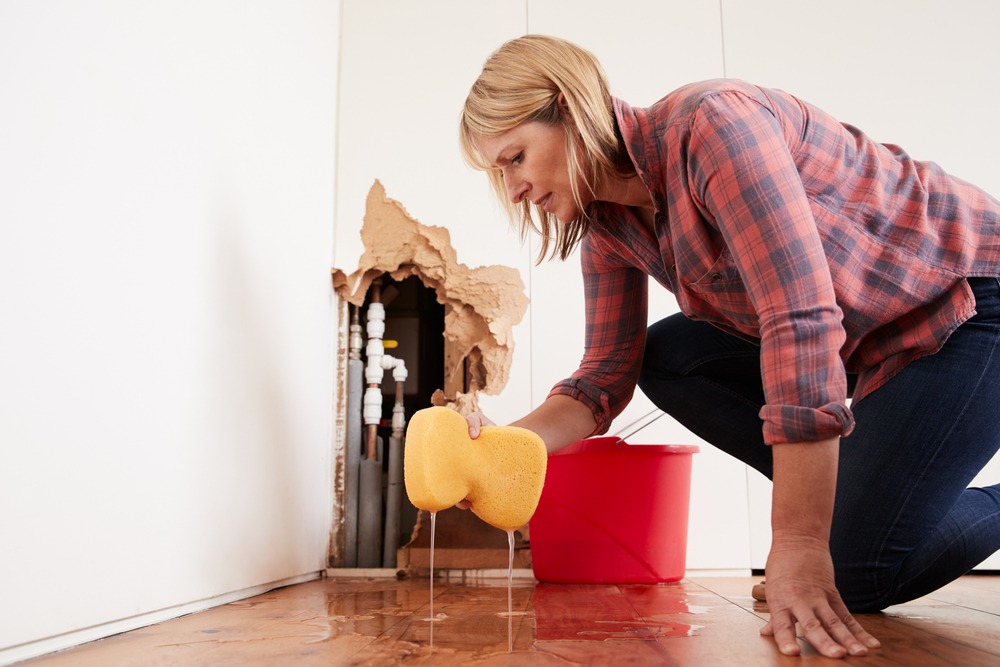Do you think your home is safe from flooding?
No matter where your house is located, there are many risks that exist that can cause flooding in your home and, consequently, expensive damage.
You can prevent the headache of flooding and extensive damage by protecting your home from floods.
Here are some factors you should consider when it comes to your home’s flood-risk as well as preventative measures you can take to avoid disaster:
Evaluating the Risk of Flooding in Your Home
Before you make changes to your home in order to prevent flooding, it’s best to determine whether or not your house is at risk of flooding.
The key three risk factors include your home’s location, foundation and plumbing system:
Location
Where your house is located is a big determining factor of whether or not your home is at risk of flooding.
Check out the FEMA Flood Map Service (in the U.S.) or Floodsmart Canada to see what the general flood risk is in your area.
These maps feature zones that indicate flood risk.
If you are in an area that is at risk of flooding, investigate the structure of your home to ensure that it is built to withstand flooding. This includes looking at the grading of your property as well as whether or not your home is raised on stilts or piers.
Next, you should get the right coverage for floods under your homeowner’s insurance policy. Most basic policies exclude flood damage.
Foundation
Not all flooding to your home is caused by regional risks. Occurrences such as spring thaw or extreme weather conditions can cause flooding in your home.
Most notably, water can enter your home through a damaged foundation.
To inspect for damage to your foundation, look for cracks and fractures in the foundation as well as on walls and floors. Also check for doors that do not close or open properly – this could be a sign that your foundation has shifted.
If your foundation is causing flooding in your home, it is in your best interest to have it repaired.
Plumbing System
Flooding refers to any instance where water enters your home and causes damage. Sometimes, this is not necessarily an exterior problem.
Burst or broken pipes can cause your home to flood and result in significant damage.
Alternatively, exterior forces can cause your sewage system (whether it be municipal or a septic tank) to backup into your home.
In order to prevent your pipes from leaking water into your home, it’s best to know how old your pipes are. If your home is older, the piping is likely old too.
Also know where your pipes are located and regularly inspect them for signs of wear or cracking.
Protecting Your Home From Flooding

Apart from mitigating flood risks that may already exist, here are some preventative measures you can take to ensure unforeseen circumstances do not damage your home:
Backwater Valves
To prevent sewage backups into your home, install a backwater valve.
Also known as backflow or sewer backup valves, these simple devices are designed to allow water or sewage to flow only one way.
This means that if the municipal sewage system or your septic tank becomes overwhelmed with water, the overflow cannot enter into your home.
Installing a backwater valve into an existing home requires a plumbing permit (since a qualified plumber will have to access the main sewer line), but most municipalities will offer a rebate for doing so.
Ultimately, having this peace of mind is well worth the effort.
Respect Your Drainage System
Clogged drains are a common cause of flooding and these blockages are usually avoidable.
The best way to prevent clogs is to be careful about what you put down your drains. For instance, hair is the leading cause of blockages and should not be flushed down the toilet or sink.
Also, food scraps such as egg shells, coffee and pasta can clog your drains if disposed of down the kitchen sink. Same goes for grease, which is a major cause of blockage in kitchen plumbing.
Be mindful of what you deposit into your drains and try to toss these culprits into the trash instead of your toilet or sink.
Position Your Downspouts
Perhaps one of the simplest ways to avoid flooding in your home is to point your downspouts away from your house.
This will keep run-off water from pooling around your foundation and causing damage and flooding.
Also keep your gutter clear of debris to avoid having water pour from the edges toward your home.
Keep Your Home Flood Free
Being proactive when it comes to mitigating your home’s flood risks is well worth it in order to avoid significant damage to your house’s structure.
Take a look at your home’s current situation and consider following the above preventative measures to keep your home and your family safe from flooding.



Comments are closed.